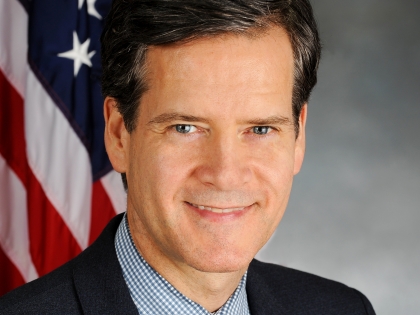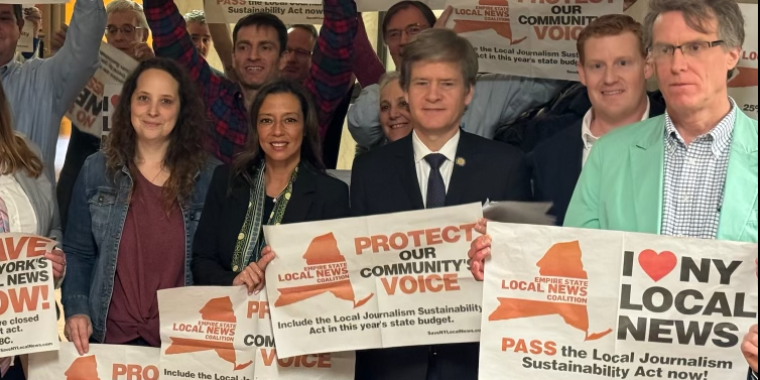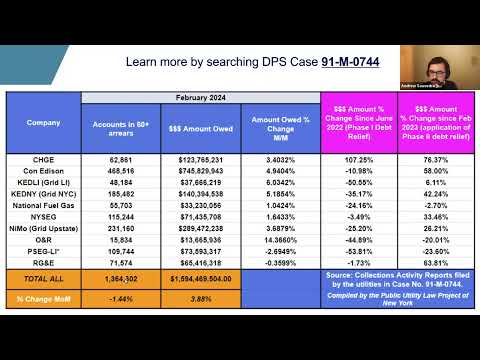
NYS Legislators' Letter Urging Master Plan on Aging Include Incarcerated Elders
October 19, 2023
Dear Acting Commissioner McDonald and Acting Director Olsen:
As New York State legislators, we applaud the New York State Department of Health (NYSDOH) and New York State Office for the Aging (NYSOFA) for coordinating a Master Plan on Aging for our state. Older adults deserve the services, support, and environment they need for a full life with dignity, wellness, and independence. We are writing today to respectfully request that the final Master Plan address the unique challenges and injustices faced by older adults in prison. We recognize that, in many facets of our state’s governance, people in prison have not been fully recognized as people and as such have been left out of other important policy considerations, and we believe it is essential for New York to continue its efforts to rectify that. Specifically, we respectfully urge you to include in this Master Plan a call for the state to enact the Elder Parole (S2423-Hoylman/A2035-Davila) and Fair & Timely Parole (S307-Salazar/A162-Weprin) bills and reinvest the savings in a comprehensive re-entry support network for older adults, as well as resources for crime victims and other tools to improve community safety for all.
The Growing Population of Older Adults in New York State Prisons
While there are many critical and urgent aging issues in communities across the state, older adults behind bars experience among the worst living conditions in New York. As you may know, the number of people in New York State prisons has been declining, yet the number and proportion of older people in prison has been rising, despite this population having the lowest recidivism rates. One in every four incarcerated people in New York State is over age 50, about 7,600 people. This is up from 12 percent in 2008. The prison population is older, on average, than the state as a whole. There are half as many people in prison in New York State today as in 2008, a drop from 63,000 to 31,000, yet the number of incarcerated people who are age 50 and older increased from 7,500 to 7,600. The proportion and total number of people in New York State prisons are over 55 is increasing steadily because of extreme sentences – even more common in the 1980s and 1990s – as well as repeated parole denials that callously ignore people’s transformations, leaving people to age and, sadly, often to die in prison. People are dying behind bars no matter how much they have done to improve themselves and regardless of whether they pose a risk to community safety.
Incarceration as a Risk Factor for Premature Death
The physical and mental stresses of the prison environment have created a health crisis in the prison system, with incarcerated people in their 50s exhibiting sickness and disability at a rate equal to that of community-dwelling people in their 70s and 80s – a phenomenon called accelerated aging. While 31 percent of community-dwelling people have had a chronic condition (e.g., asthma, hypertension, heart disease, arthritis, or liver problems), 44 percent of incarcerated people do. For incarcerated people aged 50 or above that number skyrockets to over 72 percent. People in federal and state prisons are much more likely to contract serious infectious diseases like tuberculosis and hepatitis, with a prevalence rate of 21 percent among people in prison compared to 5 percent among community-dwelling people. The prevalence of HIV/AIDS is also three times higher among people in prison compared to those outside. Incarcerated people nationally died of COVID-19 at twice the rate of the general U.S. population, after adjusting for age and sex, in the year between April 2020 and April 2021. Older incarcerated people also experience higher rates of cognitive impairments, depression, anxiety, and trauma. The average age of death for incarcerated people in New York State is 57 years. If New York State’s prison system were a country, a life expectancy of 57 would rank it among the bottom 10 in the world. Each additional year in prison takes two years off a person’s life expectancy. From 2010-2020, 1,278 people died in custody of New York State prisons. That is more than the 1,130 who were executed in New York State between 1608 and 1972, when this state had the death penalty.
Prisons are Disabling Environments
Medical care in prison is often atrocious, with some incarcerated people in New York State reporting being sent to veterinarians – yes, animal doctors – when in need of medical care. Most prisons are not accessible to people using wheelchairs, walkers, and other assistive devices, and the whims of prison staff dictate when and whether incarcerated people can use them. People experiencing sensory and cognitive decline have a harder time following orders from prison guards, completing work assignments, and navigating the physical environment of a prison, which sometimes trigger rule infractions and solitary confinement or other sanctions. Moreover, the guards, in general, are not professionally suited to working with older adults, having spent years and sometimes decades in a work environment that promotes dehumanization and the use or threat of routine violence to exert maximal control.
Solutions
While it may be tempting to address these issues with what some may call more “age-friendly” prisons, we want to make clear that such facilities do not exist. Prisons are fundamentally not therapeutic environments and we would shut down any other facility, public or private, that abuses and even kills older adults with such cruel regularity if not for the scourge of racism and brutality that infects our criminal legal system and our society at large. Instead, the answer lies in creating and expanding pathways for older adults to return to the community. That is why we are calling for the passage of the Elder Parole and Fair & Timely Parole bills. Elder Parole would allow older adults (age 55+) who have served at least 15 years of their current sentence to appear before the Parole Board for a case-by-case consideration for release. Fair & Timely Parole would help ensure Parole Board interviews are fair and meaningful, rooting their determinations in people’s rehabilitation and risk to public safety rather than politics and vengeance. Together, these bills are estimated to save $522 million per year. This money should be reinvested in expanding re-entry support for older adults, building on the great programs and services offered by groups like the Osborne Association and integrating them with existing older adult services providers, as well as resources to support crime victims, from expanding access to victim compensation funds to supporting direct service organizations.
This is not simply a matter of compassion, but rather of repairing harm and stopping cycles of violence. Communities benefit when their elders can return to them from prison. Upon release, formerly incarcerated older adults often make important contributions to their communities, including by interrupting gun violence, mentoring young people, serving as peer recovery counselors, and ultimately promoting community safety.
Cordell Cleare, State Senator, 30th Senate District
Brad Hoylman-Sigal, State Senator, 47th Senate District
Julia Salazar, State Senator, 14th Senate District
Maritza Davila, State Assembly Member, 53rd Assembly District
Ron Kim State, Assembly Member, 40th Assembly District
David Weprin, State Assembly Member, 24th Assembly District
Share this Article or Press Release
Newsroom
Go to Newsroom


